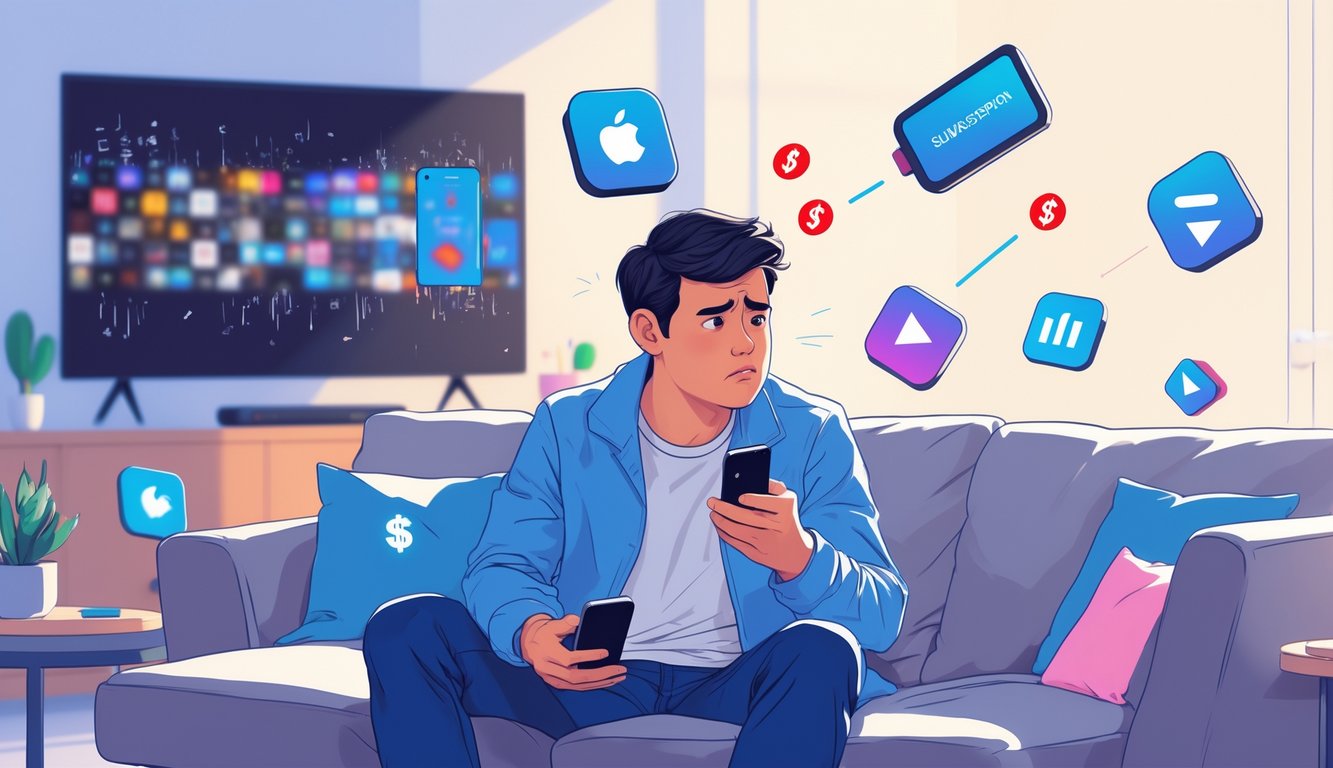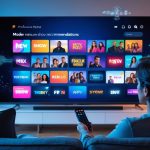
So apparently I’m paying $8 more a month for the exact same four streaming services, and Deloitte’s 2025 Digital Media Trends report says I’m not alone. Funny thing is, the only sign I got was my credit card bill, which now looks like cable crawled back into my life with a fake mustache. Streaming was supposed to be “cheap,” right? But my six ad-free subscriptions are now $87.44 a month for 2024, according to Statista. That’s $20 higher than just two years ago. That’s, what, a sad dinner for two if you skip appetizers?
Was there a warning email about “subscription fatigue” that I missed? Or is everyone just too busy bickering about whether “bundling” is a new thing or just corporate déjà vu? Deloitte’s out here saying providers are doubling the number of tiers, which just means I’m lost in a maze of plans with more asterisks than content. Where are all these premium streaming services even coming from? Forty-seven percent of us say we’re spending too much, but honestly, based on my roommate’s rage, that feels low.
And streamflation—yeah, USA TODAY flagged it, but nobody’s fixing it. Not even the “experts.” I’m staring at my dad’s dusty DVD collection and thinking, wait, did he actually win? Is there some secret “ad-free” penalty for just wanting to finish one show without getting nickel-and-dimed every episode?
Understanding Streaming Subscription Models

Here’s what’s really bugging me: I thought I was budgeting for “just one or two” streaming services, and now my math is messier than it ever was with cable. Subscription models look simple on paper—pay monthly, watch stuff. But somewhere between the “basic” plan and “bundle” price jumps, my spreadsheet is basically roasting me.
How Streaming Platforms Structure Subscriptions
Remember when picking a streaming plan was as easy as picking socks? Not anymore. Netflix, Disney+, Max—everybody’s got their own weird menu. Want no ads? That’ll cost you. Want multiple streams? More money. Hulu’s like, “Go ahead, save a few bucks, but here’s a pharmaceutical ad about toenail fungus every ten minutes.”
Forbes says platforms are racing back to ad-supported models because people don’t want to pay for premium. Bundling’s just as messy: Disney bundles with Hulu, but then shows disappear, or they’re locked behind some “Ultra Plus” tier. I saw some Redditor complain they’re paying $60+ a month just to get what cable used to have, and even then, stuff just vanishes. By the time these companies finish “restructuring,” piracy will look like the only rational option. (Joking. Sort of. Don’t @ me, ISP.)
Traditional TV Versus Modern Streaming Services
Picture my dad’s old setup: one remote, cable box, a million useless channels, but at least the price only changed once a year. Streaming? New platforms drop every five minutes, so now I track subscriptions in Excel like some kind of hobby. “Cut the cord, save money”—that was the dream, but 2023 Nielsen data says the average household now pays for four platforms, and the monthly total beats what cable cost in the mid-2010s. $62 a month is “normal” now.
Cable was annoying, sure, but at least when prices went up they called you. Streaming? They sneak in ads to “ad-free” plans and just email you at 2 a.m. when it’s too late. Remember when HBO Max became just Max and started shoving commercials into basic subscriptions? NBCUniversal promised “no hidden fees,” then slipped in a sports surcharge. Not exactly headline news.
I don’t think anyone’s keeping track of this—not viewers, not experts, not even the people running these services. I once tried asking a customer service rep about the difference between “ad-lite” and “ad-supported” plans, and she just laughed at me. My inbox is a graveyard of login emails and I’m pretty sure I’m paying extra just for the privilege of being confused.
The Hidden Costs of Streaming Subscriptions
Ever try to cancel a streaming service? Suddenly you’re getting bombarded with “free” trials, random add-ons, and fees you never agreed to. The “cheap” subscriptions quietly creep up until you’re way over your comfort zone. Every time I check my bank statement, some new bundle or ad tier has moved the finish line on what I thought I was paying.
Unexpected Fees and Add-Ons
Nobody warned me when Paramount+ did that 99-cent promo—three months later, it’s $11.99. And since when are sports “premium”? HBO does it, Apple TV sneaks in random movie rentals, and I heard about a UK “HD” fee. “Device activation” fee? For what, my toaster?
These surprise charges just multiply. The American Consumer Satisfaction Index says almost 30% of households underestimate their monthly streaming bill by $50 or more because of all the hidden add-ons and price hikes. It’s not just extra screens—there’s “offline download,” “kids’ mode,” and then a “no commercials” upcharge on an “ad-free” plan. Make it make sense.
Half the time, apps default to the pricier tier unless you’re paying close attention. Starz once slipped into my Amazon Prime with a single accidental click—no alert, no warning, just $9 a month gone. Nobody in my house even noticed until I asked who was watching Outlander.
Ad-Supported Versus Ad-Free Tiers
Supposedly, ad-supported streaming (think Hulu’s basic or Netflix with ads) was going to keep things affordable. Right. I hit my monthly limit watching playoff games and still got six commercial breaks an episode. These ad tiers? The math doesn’t work.
I did the numbers: binge 30 hours a month, and you’re sitting through 7+ hours of ads. A Philo tech insider told me ad revenue barely covers half what ad-free plans bring in, so companies just raise rates anyway. Want no ads? Disney+ jumps from $7.99 to $13.99. And “ad-free” isn’t even literal—Peacock Premium skips ads except for “select shows” and “special events,” which is basically everything I actually care about.
Ad-supported plans aren’t just about commercials. Lower resolution, laggy menus, and missing features like offline viewing. You pay in patience instead of dollars, and honestly, some friends say that hurts worse.
Bundling and Its Financial Impact
Bundling is supposed to save money, but does it? Disney+, Hulu, ESPN+ looked like a steal at $14.99, but then it crept up, and ad-free Disney+ isn’t even included unless you cough up more. The overlap is nuts. I’m double-paying for shows and only notice when something disappears or gets cancelled.
The University of Chicago says most U.S. households spend 30% more with bundles than if they just picked one ad-free service. Add-on sports, live TV, “exclusive content”—all those raise the monthly bill, but you only notice after the fact. Do I want Starz or AMC+ in the Hulu app? Apparently I’m paying for that, even if I never open them.
I’ve realized my “cheap” bundles now cost more than my old cable package, but at least cable never made me “manage devices” every month. It’s not just the price—it’s how slippery the real cost is. Every “deal” just feels like another tiny defeat.



